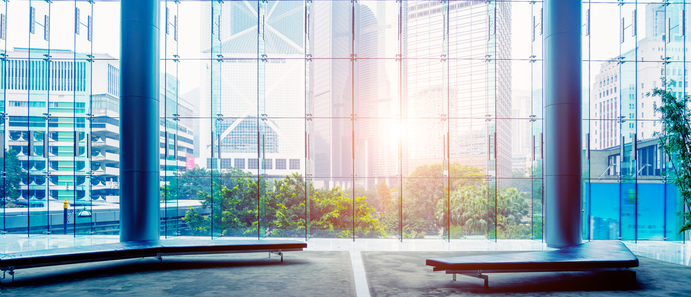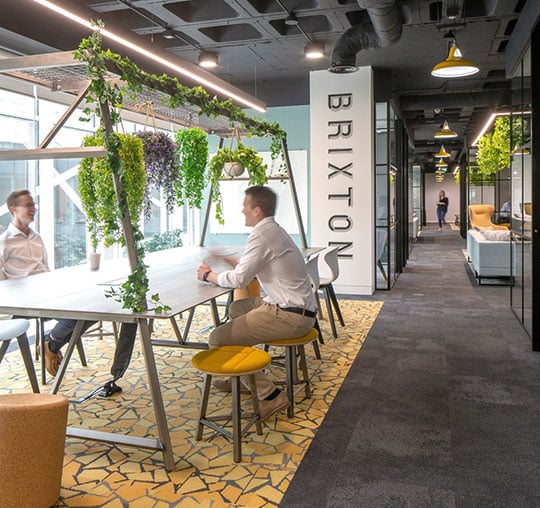 A strategy-led return to work will look very different from the improvised solutions that have helped us so far.
A strategy-led return to work will look very different from the improvised solutions that have helped us so far.
All those interesting partition hacks and surprising home office solutions we came up with were only stop-gap measures, after all.
If we’re going to fully open up shared workspaces again we’re going to need an approach that answers the long term needs of our companies and our workers.
We need clear direction
We need a strong sense of direction and sustainability in our work.
But as Deloitte says, the post-Covid impact is far from certain;
“This will not be a typical recovery: COVID-19 is unlikely to end suddenly given the lack of effective and available therapeutics and the uncertain timing of a vaccine. Organisations must plan for multiple scenarios and time horizons, as they shift from crisis response to recovery”
Things won't be the same
Not only this, but companies will need to consider the cultural shift that has taken place in the last 12 months, as some workers have discovered new freedoms and possibilities in their work from home lives. Many people will not want to go back to the ‘old normal’ and businesses may have found greater returns from workers in the great WFH experiment , too.
Because of this, our strategy needs to focus on the potential of our two most important assets - our people and our real estate.
Support the potential of your people
Your first port of call should be to find out what your employees are thinking and feeling. Do they want to come back to the office? What do they want that office to look like? What are they going to need in order to feel safe and be productive? Sending a simple survey out to your workers will give you a good idea of where they are at.
There is an opportunity now to capitalise on what our workers have learnt about wellbeing and productivity during the lock-down and apply those lessons to create better environments.
Some of the options that emerge from this will be radical and will require a complete change of premises and location to realise. Other options will require fresh imagination to make our new working lives more pleasurable and possible.
Discover the potential of your real estate
For those businesses who conclude that offices are still the best solution for productivity and collaboration, workplace design strategies will need to focus on creating uniquely compelling and safe spaces that strengthen culture and performance.
But we'll need to retain a core of flexibility that can keep us all safe in an uncertain post-pandemic world.

A design strategy for a seamless return
- A focus on density, division, geometry - will keep seating arrangements safe and functional
- Screens and biophilia can be deployed to help with social distancing while giving psychological security and a sense of well being.
- Furniture should be finished with anti-microbial and easy to clean materials - yet not be overly ‘clinical’ in feel
- We’ll need the ability to configure our ‘own spaces’ as much possible to ensure we can feel enough control and autonomy after our WFH experiences. This will include decisions around posture and privacy, but also the ability to decorate and personalise to taste
- Workers need access to natural ventilation where ever possible and air purifying units to support better air quality in other spaces
- We’ll still need to retain the ability to support remote working at will on an individual/company-wide basis should there be new flare ups of the virus
Enabling collaboration through design - virtually and in person
Special attention will also need to be paid to how we can collaborate in these shared spaces, too. The composition of people working from home and in the office will likely be much more mixed.
Different configurations of workers will, therefore, need to be supported on a day to day basis.
- Agile furniture is still a high priority - we need desks and tables on wheels to bring us together, removable table tops to reconfigure work spaces - but clear policies about how we move, share and sanitise to keep safe.
- Longer collaboration benches and other kinds of seating may be needed so that people can still work together, but at a safe distance
- ‘Always-on video conferencing’ and digital platforms (such as virtual whiteboards) will allow team members to co-create content successfully even when they are physically distanced at home and within the office.
- Shared spaces will need to be properly ventilated and air purified
- The flow of people in an ever-changing office will need to be carefully managed and tracked to ensure safe movement for everyone

Embracing a more radical strategy?
But what if the strategy is radically different? What if, like DropBox you decide workers will be primarily based from home and the office will become a hub for meeting instead?
In this scenario, the office is a destination for face to face team meetings’ and larger scale ‘town hall’ gatherings. It is designed to inspire innovative thinking and a sense of shared culture.
- Larger spaces can be more conducive to social distancing
- Within these spaces teams and individuals will need ‘safe’ break out capabilities - think about partitioning with plants and acoustic screens
- Movement and flow will be critical - bottle necks of people could potentially be unsafe
- Oversized ‘statement piece’ furnishings could allow people to sit and perch at safe distances - while introducing a sense of playfulness
- Thought needs to be given to keeping surfaces clean and sanitised in line with the latest guidelines
- These spaces will need to be more experiential - similar to modern hospitality spaces. They need to be inspiring and reflective of your brand vision to help build a sense of company identity.
Supporting home workers is vital
And it goes without saying that we’ll need to support home working in a very focused and considered way as it becomes the day to day reality of many people.
Making sure people have what they need to be comfortable at home will be a key part of any strategy. It will be vitally important if there are fresh flare ups of the virus.
Have you got what you need?
Committing to any of sustained strategy is going to require a detailed look at the assets and real estate we have at your disposal. A furniture audit will give a clear picture of what you’ve got. Meanwhile, working with the right workplace specialists will help you understand what you need.
But it is up to you and your team to decide the strategy that is going to work for your business.










